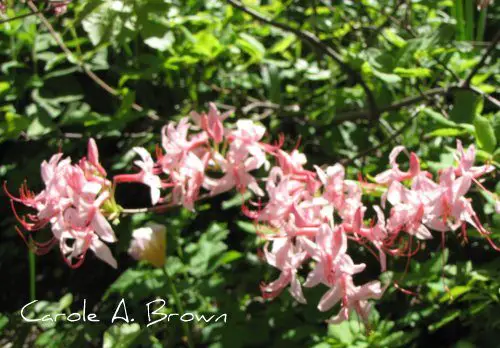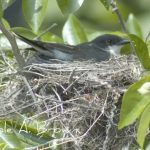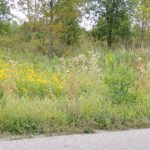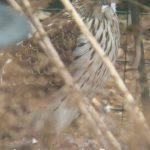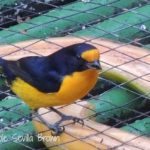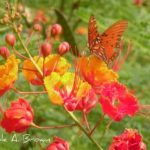Sometimes the best quality a wildlife gardener can possess is that of patience, which I am sometimes lacking, but I’m working on it. A great habitat for wildlife is not created overnight. We have to learn to wait while our plants grow to maturity.
But this sense of anticipation sends me eagerly to my garden. Will my flame azalea finally bloom this year?
Yes! Finally.
I planted a tiny little specimen of Rhododendron calendulaceum (Flame Azalea) five years ago. It has grown bigger every year, spreading it’s branches and roots but it had yet to bloom.
I was so happy to go out this morning and see it in all it’s glory. Now I was expecting the blooms to be the flame orange color for which this shrub is named, and I was a little surprised to see the pink blooms, but I learned that the bloom color can vary, from red, to orange, to yellow.
And I’m so excited that it has bloomed that I find I don’t really care what color it is!
[Update: Charlie at Botany Buddy has informed me that I was correct to be surprised at the pink blooms of this shrub because it is actually Rhododendron perclymenoides (Pinxter Azalea). I’ll have to have a discussion with my local native plant nursery who mislabeled this plant, and also to purchase a Flame Azalea because now that I’ve spent 5 years anticipating its bloom, I really want to see the flame orange flowers!] Also thanks to Charlie for sending along a photo of a real Flame Azalea.
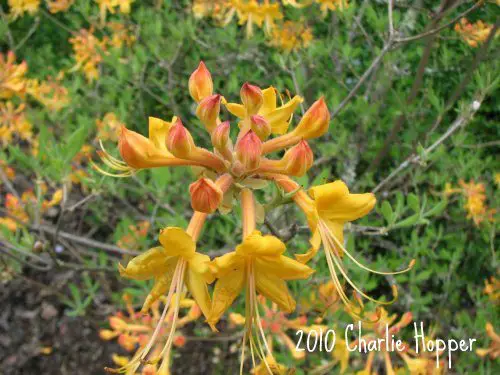
Also taking the spotlight today, Trilliums! I love trilliums. And I’ve got two different species in bloom today.
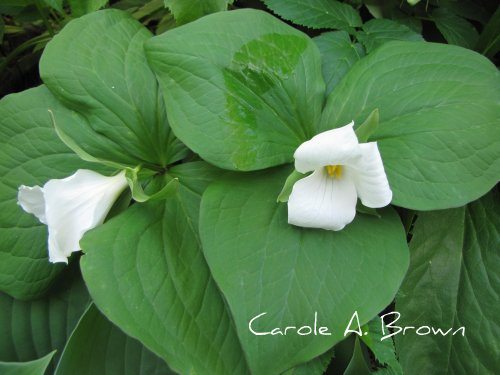
First the White Trillium (Trillium grandiflorum)
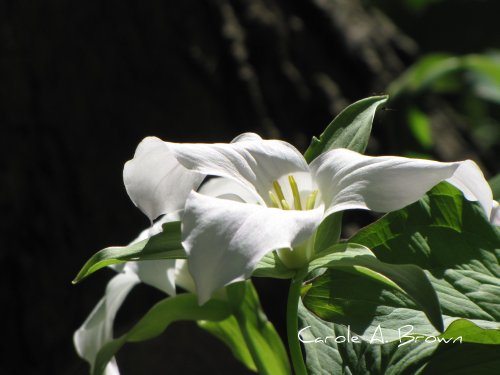
And also the Yellow Trillium, or Yellow Wake-Robin(Trillium luteum)
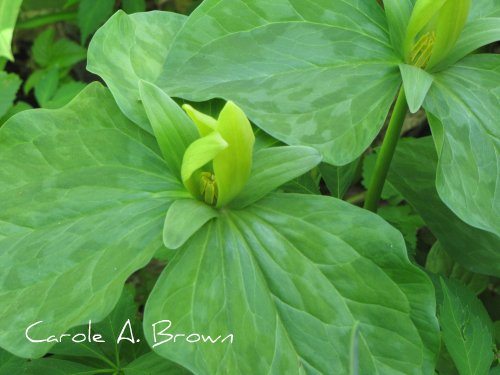
Finally, my native geraniums (Geranium maculatum) have decided to show their pretty little faces for me today.
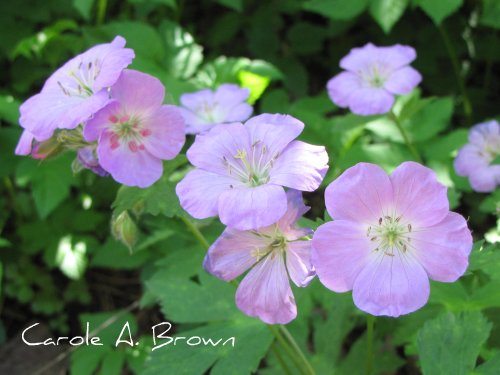
More From Ecosystem Gardening:
Submit your review | |
As indicated in the update this is not R. calendulaceum but might be R. periclymenoides, R. canescens, or R. austrinum pink form. Now R. austrinum is often called the Florida Flame azalea and the pink form came into commercial propagation in the last decade. If your pink is nonfragrant and not sticky to the touch of the corolla then it is very likely R. periclymenoides. If it is fragrant and sticky to the touch on the corolla, other flower parts, or new growth then its is most likely not R. periclymenoides. If it is only sticky on the corolla it is most likely R. canescens. If it very sticky on all flower parts and new growth it is most likely R. austrinum Pink form. A close up of the all flower parts and new growth would show if the there are glands. The more glands the more likely austrinum. Glands only on the corolla the more likely canescens, No glands anywhere the more likely periclymenoides. R. periclymenoides and R. canescens are diploids and R. austrinum is a tetraploid. However ploidy level is not able to be determined based on the physical characteristics. R. austrinum Pink form was thought to be R. canescens until 2006 when it was discovered that R. austrinum could be pink especially when found near Pensacola, Florida. R. canescens can have no glands or glands everywhere but typically only glands on the corolla. R. periclymenoides can have glands on the corolla but normally has no glands thus no fragrance. R. austrinum is almost always very glandular on all flower parts and the new growth and is thus very fragrant.

